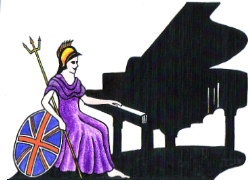Teachers, Accompanists and Piano Entertainers in the UK

UK Piano Page

Browse Locations England » Greater Manchester » Atherton
13 The Broadway
Woodham
New Haw, Surrey KT15 3EU
England
Covering Kent, Sussex and Surrey from stores in
7 - 9 Tib Street
Manchester
Manchester, Greater Manchester M4 1AD
England
C. Bechstein's Northern Flagship piano showroom
94 Tilehouse Street
Hitchin
Hitchin, Hertfordshire SG5 2DW
England
We stock Fine Quality instruments, modern second-
3 Newham Street
Bolton, Greater Manchester BL1 8QA
England
The Music Box was established over 25 years ago to
30 Portland Street
Handforth, Greater Manchester M1 4GS
England
Music Festival for performers and guests Our 10th
18-06-2022 01:30PM
The Morecambe Bay Piano Group was set up to extend
11-12-2021 02:00PM
The Morecambe Bay Piano Group was set up to extend
08-01-2022 02:00PM
The Morecambe Bay Piano Group was set up to extend
12-02-2022 02:00PM